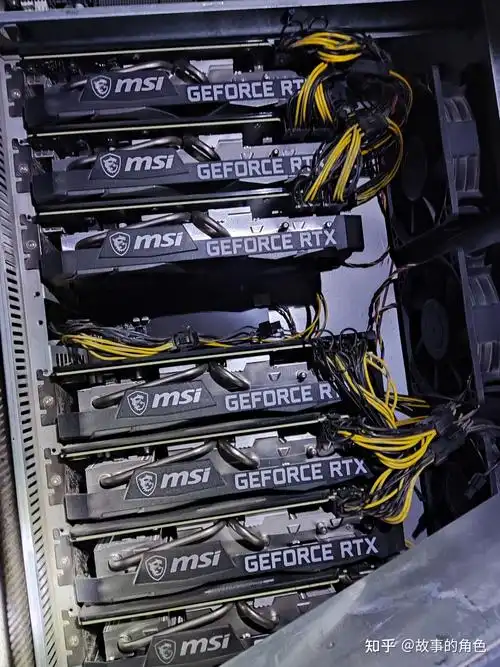In the vast, ever-evolving landscape of cryptocurrencies, mining remains a cornerstone activity pivotal to the validation and production of digital assets. Whether you are venturing into the robust ecosystem of Bitcoin, the innovative realms of Ethereum, or the playful yet potent corridors of Dogecoin, the choice of mining hardware can significantly sway your profitability, efficiency, and long-term sustainability. Navigating through altcoins’ diverse algorithmic demands and Bitcoin’s SHA-256 rigour requires an acute understanding of mining machines, hosting solutions, and hardware versatility, especially for traders and enthusiasts managing diverse portfolios.
Cryptocurrency mining hardware is more than just machinery; it’s the backbone of decentralized networks. At one end, Bitcoin mining machines exude raw power, optimized for the SHA-256 algorithm, usually embodied by ASIC miners—Application-Specific Integrated Circuits—engineered for specific tasks with relentless efficiency. On the other hand, altcoins like Ethereum and Dogecoin often depend on different hashing algorithms (Ethash for ETH, Scrypt for DOGE), necessitating either GPU miners or specialized rigs that align with the coin’s mathematical puzzle. This dichotomy poses a fascinating challenge for miners looking to diversify. Should one invest solely in BTC-optimized ASICs or adopt a hybrid approach incorporating flexible GPUs and cutting-edge mining rigs?

Mining farms have become emblematic of the industry’s scale and ambition. These colossal setups cram thousands of mining machines into temperature-controlled warehouses, maximizing hash rates via sheer volume and state-of-the-art cooling techniques. However, individual miners or smaller operations seeking exposure to a basket of cryptocurrencies often find hosting solutions to be an appealing middle ground. Hosting mining machines remotely allows operators to leverage professional facilities’ power management, cooling, and security, while focusing on strategic portfolio decisions—balancing BTC’s volatility with the altcoin opportunities presented by Ethereum, Dogecoin, or emerging protocols.
The contrast between holding a diverse digital portfolio and mining hardware selection is subtle yet profound. Bitcoin’s sheer dominance and network security encourage miners to embrace ASIC rigs tailored specifically for the coin; these machines are investment-heavy but offer unparalleled efficiency. Ethereum mining, though moving increasingly towards proof-of-stake, still invites GPU miners to capitalize on smart contract networks that power decentralized finance and NFTs. Meanwhile, Dogecoin, initially conceived as a meme coin, has morphed into a surprisingly resilient currency, incentivizing miners who favor hybrid rigs capable of Scrypt algorithm computations.
Exchanges stand as the nexus connecting mined assets to real-world value. Multiple cryptocurrencies mined directly translate into tokens for trade or investment diversification. Mining firms effectively become liquidity nodes, supplying freshly minted BTC, ETH, or DOGE into exchanges, which then feed into the vast ecosystem of portfolio management, staking, and yield farming. A mining operation’s hardware choices thus have downstream implications on not just individual earnings but broader market dynamics.
Emerging technologies and innovations in mining hardware herald an age of unprecedented adaptability. The recent advent of modular mining rigs designed for fast algorithm switching exemplifies the industry’s drive to accommodate multiple coins without forfeiting efficiency. These rigs empower miners to pivot seamlessly between BTC, ETH, DOGE, or any altcoin season trends favor. Such flexibility mitigates risk, optimizes returns, and aligns with the growing sophistication of portfolio diversification strategies.
Nonetheless, practical considerations around power consumption, cooling infrastructure, and hosting costs remain crucial. Bitcoin mining farms, craving colossal electricity supplies, are often situated near renewable energy sources to tame operational expenses and environmental impact. Smaller scale miners embracing altcoin farming must balance these demands through hosting miners in leased facilities equipped with robust cooling solutions or proximity to sustainable grids. Hosting providers increasingly tailor services to diverse customer needs—from dedicated BTC ASIC rack space to multi-algorithm capable GPU hosting.

For crypto investors and miners alike, making informed choices about mining hardware is intrinsically linked to broader market awareness. Bitcoin’s solidified position as digital gold invites endurance and scale; Ethereum’s adaptability continues attracting innovation, reflecting the DeFi revolution; Dogecoin’s quirky yet persistent presence illustrates community power. By dovetailing hardware capabilities with strategic altcoin exposure, miners can sculpt portfolios that not only endure market vicissitudes but thrive within them.
In sum, selecting crypto mining hardware in the context of altcoins and Bitcoin is a multilayered decision—one where algorithmic affinity, efficiency parameters, hosting possibilities, and operational scale intertwine. From bespoke ASICs to versatile rigs, from homegrown miners to sprawling mining farms, the hardware you choose will dictate your capacity to capitalize on the rich, diverse cryptocurrency ecosystem. As the market evolves, adaptability remains king—ensuring your mining enterprise aligns perfectly with your portfolio ambitions.
这个文章生动剖析了从Altcoins到Bitcoin的挖矿硬件选择,提供实用策略,助力多样化投资组合高效运行,却巧妙提醒:市场如天气,硬件再强,也需运气加持!